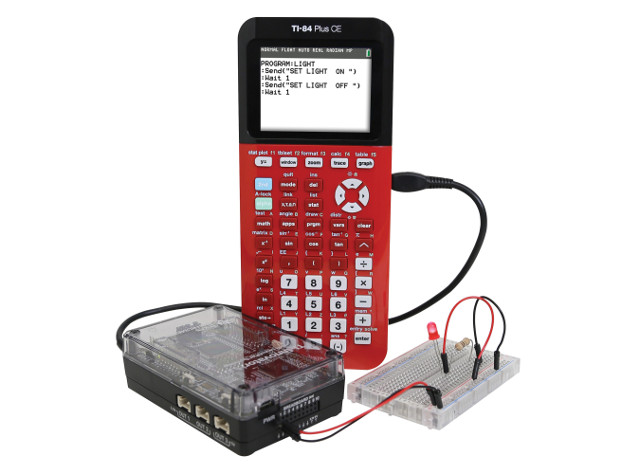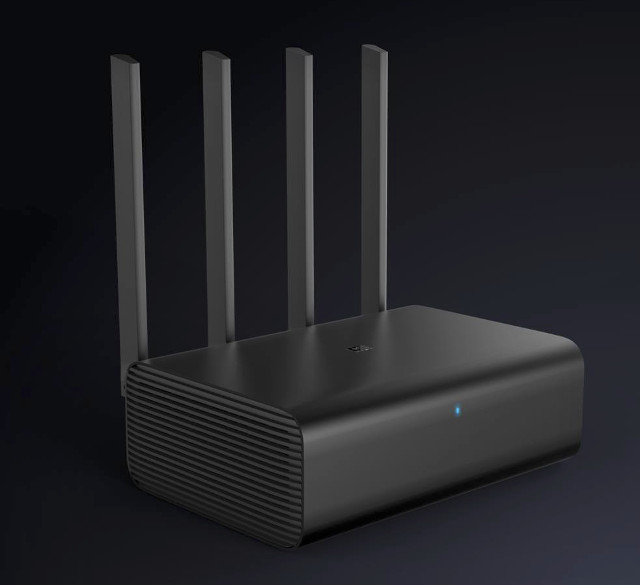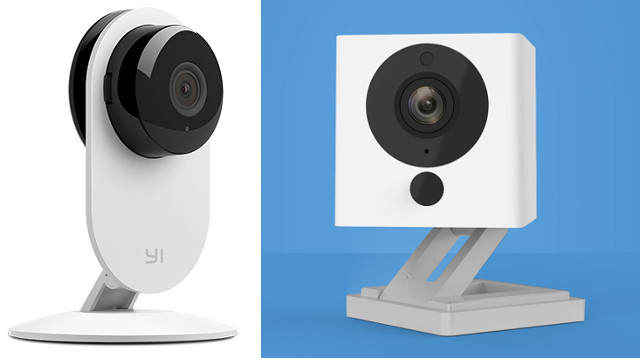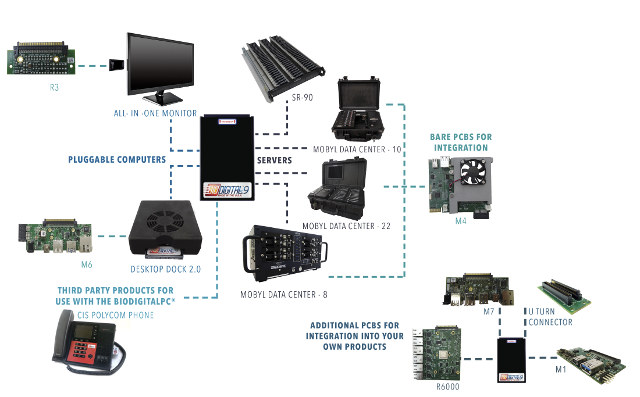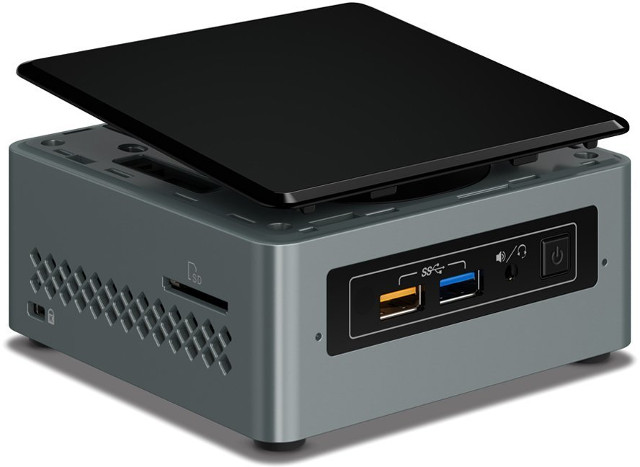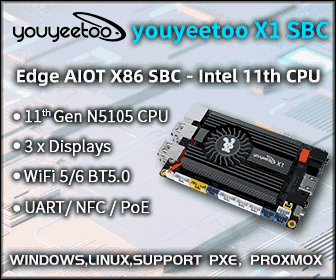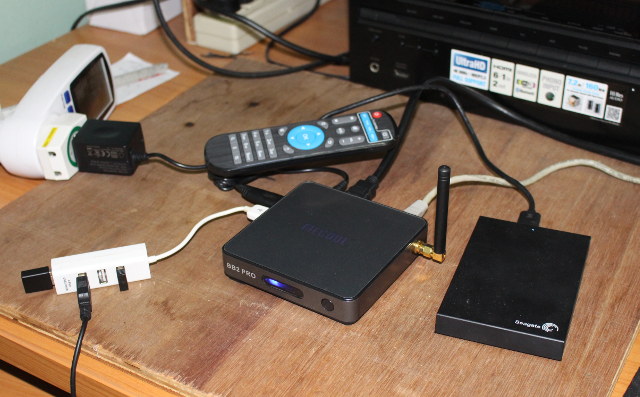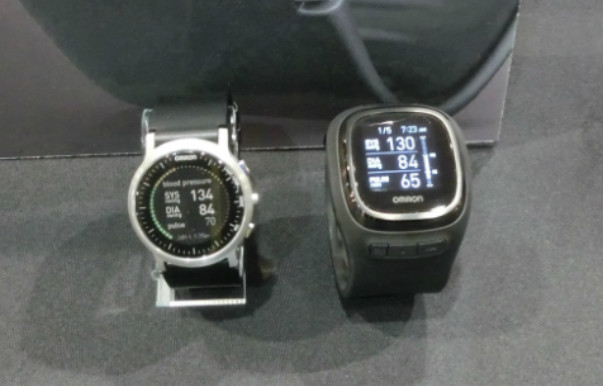Specific compression and/or encoding algorithms are used for video, audio, and files, and each time one watches a video, listens to music, or downloads a file from the Internet, the amount data has likely been reduced thanks to the implementation of one of those algorithms. Google has been involved in the development of some algorithms and their implementation such as VP8/VP9/VP10 video codecs, and brotli file compression. With the emergence of virtual and augmented reality applications and accompanying 3D mesh data, the company has also worked on 3D data compression, and just unveiled Draco. A simple web search showed me some other 3D mesh compression tools are already available including Open3DGC and OpenCTM, but Google decided to compare Draco to GZIP instead, and it indeed offers much better compression than this general purpose file compression tool. Encoding and decoding also appear to be fairly fast, although Google did not compare […]
TI Innovator Hub Connects MSP432 LaunchPad Board to TI Graphing Calculators
I remember when I was in high school we all had those TI calculators to cheat enhance our chances of passing exams, but Texas Instruments has now launched what it calls TI-Innovator Hub based on a MSP432 LaunchPad board that connects to some of their graphing calculators and allows student to program and control external hardware through their calculators. Innovator Hub hardware specifications: MSP-EXP432P401-ET TI LaunchPad Board 3x input ports, 3x output ports, I²C port Breadboard connector with 20 labeled pins USB Mini USB Port (DATA port for connection to a TI graphing calculator, or a computer running TI-Nspire CX software) Micro-USB port (POWER port to connect to external power source) Misc – Red LED, RGB LED, Light Brightness Sensor, and speaker Enclosure The hub can then be programmed using TI-84 Plus CE (TI Basic language) or TI-Nspire CX (Lua language) graphing calculators. It’s a bit like playing with Arduino […]
Xiaomi Mi R3P AC2600 Wireless Router is up for Pre-order for $127 without Hard Drive
Xiaomi introduced Mi Router HD, an AC2600 router with 1 or 8 TB HDD storage, at CES 2017. The exact same router now appears to be up for pre-order on GearBest for $127, but without any hard drive, which should allow you to use to own. GearBest does not call it “Mi Router HD” but instead “Xiaomi Mi R3P”. The photos match the ones of the product unveiled at CES 2017, and the preliminary specifications can be derived from various sources: SoC – Qualcomm IPQ8064 quad core network processor System Memory – TBD Storage – Flash storage for firmware (TBD); SATA drive support Connectivity 802.11 a/b/g/n/ac WiFi up to 2600 Mbps with 4 antennas 3x Gigabit Ethernet LAN ports, 1x Gigabit Ethernet WAN port USB – 1x USB 3.0 port Dimensions – 19 x 13 x 6.5 cm Weight – 1.030 kg Just like other Xiaomi routers it can be […]
Xiaomi WiFi IP Cameras Hacked to Run RTSP Server, Disable Cloud Service
Xiaomi 720p and 1080p IP cameras include night vision, motion detection, WiFi connectivity, and can save videos locally, and send them to a cloud server in China for you to check your camera from anywhere. The 720p camera sells for about $50, while the 1080p camera goes for around $30 on GearBest and other websites, but comes with less IR LEDs and no optical zoom. [Update: The black version of the 720p camera goes for $29.99 on Amazon US] They works fine, but you need a specific mobile app to configure and control the camera, and if you’d rather not have the videos streamed to some server outside of your local network, github user “Fritz” has developed a set of scripts for the camera to disable cloud service, run a standard RTSP server, as well as HTTP and FTP servers on the camera. He did his work on Yi Ants […]
BioDigitalPC Credit Card Sized Pluggable Computer Fits into Desktop Docks, AIO Monitors, Datacenters-in-a-Suitcase, and More
We’ve seen in the past at last two projects development CPU cards aimed for easy upgrade a replacement, starting with EOMA-68 standard currently with products based on ARM processors and mostly targeting the consumer market, followed more recently by Intel Compute Card that focuses on the smart devices and enterprise markets. But I’ve recently found out a third company has been doing pluggable CPU cards for a little while: Arnouse Digital Device Corporation (ADDC) with their BioDigitalPC cards designed for the military and small businesses, and pluggable into desktop docks, phones, all-in-one monitors, and even portable datacenters that fit into a suitcase. The company also has “reader boards” that you can integrate into your own products / enclosures. Everything is shown in the diagram below. The latest generation (Gen 9) of BioDigitalPC cards are based on Intel Atom Bay Trail-I single, dual or quad core processors with 2 to 8 […]
Intel NUC6CAYS NUC Powered by Celeron J3455 Apollo Lake Processor is now Available for $233
Intel unveiled plans for two Apollo Lake NUCs, respectively NUC6CAYS & NUC6CAYH, in summer 2016. The former comes with 2GB memory and 32GB storage with Windows 10 Home preloaded, while the latter is a barebone system. The company has now started to sell the Windows 10 models on Amazon US for $232.99 with free shipping (if you happen to live in the US). Here’s a quick reminder of the main specifications: SoC – Intel Celeron J3455 quad core processor @ 1.5 GHz to 2.3 GHz (burst) with 12EU Intel HD graphics 500 @ 250 to 700 MHz (10W TDP) System Memory – 2GB DDR3L-1600 SO-DIMM RAM, upgradeable up to 8GB DDR3L-1866 Storage – 32GB eMMC flash, 2.5″ SATA3 bay for 9.5mm hard drives or SSDs, SDXC slot with UHS-I support Video Output – HDMI 2.0 up to 4K @ 60 Hz, VGA Audio – Up to 7.1 channels via HDMI, […]
Mecool BB2 Pro Review – TV Box with DDR4 Memory – Part 2: Android Firmware, Benchmarks, Kodi
Most Android TV box comes with DDR3 or DDR3L memory, but Mecool BB2 Pro comes instead with 3GB DDR4 memory that’s supposed to offer 50% increased memory bandwidth. That’s why I was interested in reviewing the box. I’ve already checked out BB2 Pro hardware in the first part of the review, so the second part will focus on the firmware, video playback in Kodi 17, and benchmarks to find out if there’s any improvement over other Amlogic S912 using DDR3 memory. It’s not the first DDR4 box I’ve tested however, as Eweat R9 Plus powered by Realtek RTD1295 processor also included DDR4 memory, but based on my tests, there’s was no noticeable differences with Zidoo X9S based on the same processor, but with DDR3 memory. But this time, we’ll see if it is any different with Amlogic platforms. First Boot, Settings and First Impressions I connect a USB 3.0 hard […]
Omron Project Zero 2.0 is a Thinner Wrist Blood Pressure Monitor & Smartwatch
Omron Project Zero BP6000 blood pressure monitor & smartwatch / fitness tracker was unveiled at CES 2016. The device was due to be released at the end of 2016 pending FDA approval, but the launch has now been delayed to spring 2017, and it will be sold under the name “HEARTVUE”. The company has however showcased a new version at CES 2017, for now just called Omron Project Zero 2.0 that has the same functions but is more compact and lightweight. The watch will also work with Omron Connect US mobile app, and can record accurate blood pressure, as well as the usual data you’d get from fitness trackers including activity (e.g. steps) and sleep, as well as smartphone notifications. Blood pressure measurement can be activated by the user by pressing a button and raising his/her wrist to the height of the chest. The goal is the same as the […]



